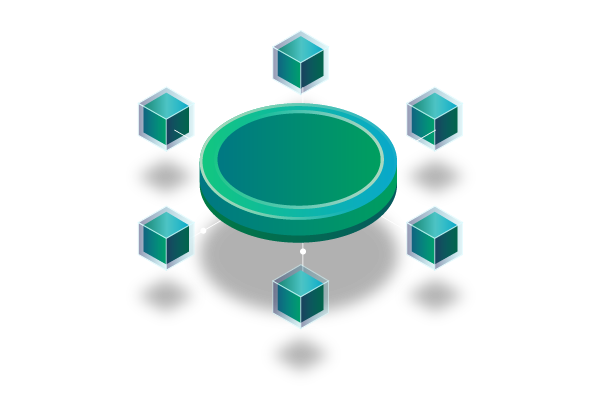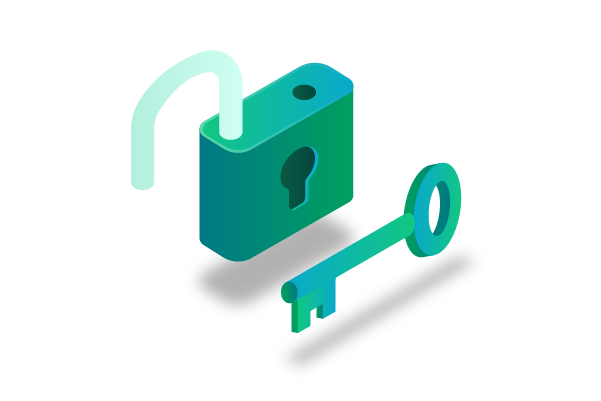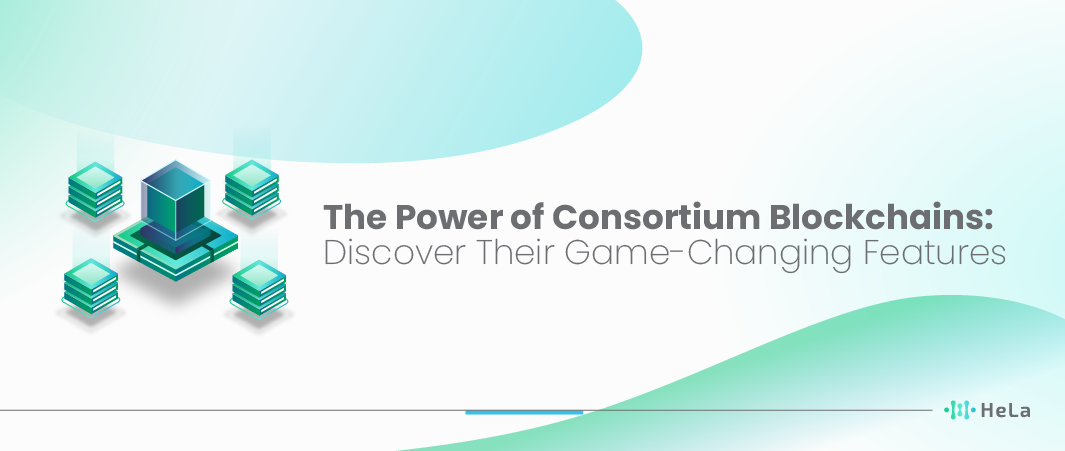In the vast realm of blockchain technology, where decentralized systems are the new norm, a particular subset has risen to prominence due to its peculiar yet effective approach to consensus and privacy: the consortium blockchain. Unlike public blockchains that welcome everyone or private blockchains restricted to a single entity, consortium blockchains strike a balanced middle ground. This article aims to elucidate the standout features of consortium blockchain, shedding light on its potential applications and advantages.
The journey of understanding this technology goes beyond just knowing its definition. It’s about diving deep into its mechanisms, appreciating its nuances, and recognizing where it fits in the larger tapestry of digital solutions. So, whether you’re a blockchain novice or a seasoned expert, there’s something in this exploration for everyone. Let’s delve into the captivating world of consortium blockchains and unravel the mystery behind its growing popularity.
What is a Consortium Blockchain?

At its core, a consortium blockchain is a collaborative effort. Unlike public blockchains like Bitcoin, where anyone can participate, or private blockchains that are typically controlled by a single organization, consortium blockchains are governed by a select group of entities. These entities collaborate and share the responsibility of validating and recording transactions on the network.
Also Read: What is CLI in Blockchain? Ultimate Beginners Guide
Imagine a situation where multiple banks come together to develop a shared ledger for faster cross-border transactions. Instead of relying on a single entity (like in private blockchains) or a broad, anonymous group (like in public blockchains), these banks form a consortium, working together to validate and finalize transactions. This approach provides a blend of transparency, control, and security.
Key Features of Consortium Blockchains
Consortium blockchains are a type of blockchain network that falls between public and private blockchains in terms of access control and participation. They are often favored by organizations and industries where multiple parties want to collaborate and share data without relying on a centralized authority. Here are some key features and characteristics of consortium blockchains:
Selective Decentralization
Consortium blockchains strike a middle ground between being fully decentralized and overly centralized. In these blockchain systems, a specific set of nodes, usually chosen in advance, manages the agreement process to maintain efficiency while still preserving a reasonable level of decentralization.
Imagine it like this: picture a group of friends planning a camping trip. Instead of having one person make all the decisions or having each person do their own thing separately, they agree that a few trusted friends will take the lead and make important choices, like picking the campsite and organizing meals. This way, the trip runs smoothly and efficiently, but everyone still has a say in the decision-making process. In consortium blockchains, it’s somewhat similar—the selected nodes work together to validate transactions and maintain the blockchain’s integrity, ensuring things run efficiently while not concentrating too much power in one entity’s hands.
Privacy and Control
In a consortium, folks have more privacy compared to public blockchains, which means they can keep their business dealings more confidential. It’s kind of like having a private chat with a group of friends instead of shouting your conversation in a crowded square. This privacy is handy for businesses and organizations because they can protect sensitive information.
Additionally, consortiums also give these organizations more control over how things work on the network. It’s a bit like being the boss of your own club – you get to decide the rules and how things run. This control lets organizations set up specific guidelines and structures that work best for them, making the whole system more tailored to their needs. So, privacy and control are like the secret sauce that makes consortiums a practical choice for certain situations.
Scalability and Efficiency
Consortium blockchains, compared to public blockchains, often have an advantage when it comes to handling transactions quickly and efficiently. This is because consortium blockchains involve a smaller group of nodes or validators, which makes reaching consensus on transactions faster.
Think of it like a smaller committee making decisions more swiftly compared to a large assembly. This inherent scalability allows consortium blockchains to process a higher number of transactions per second, making them a practical choice for various applications, particularly within closed or semi-private networks where trusted participants work together.
However, it’s important to note that consortium blockchains may not offer the same level of decentralization as public blockchains since they involve a smaller, trusted set of validators. This trade-off between speed and decentralization is a key consideration when choosing a blockchain solution, as different use cases require different balances between these factors.
So, while consortium blockchains offer advantages in terms of scalability and efficiency, they may not be the best fit for every scenario, and careful consideration is needed to select the right blockchain technology for a particular application.
Interoperability
Consortium blockchains are built with the idea of playing nice with other systems, which is super handy for industries that already have their digital stuff in place. These blockchains are like the friendly neighbor who’s always up for a chat over the backyard fence.
Imagine you’re in an industry where you’ve got your computers and digital tools humming along smoothly. Consortium blockchains are like the tech buddy that slides right into your existing setup without causing any headaches. They’re all about making your life easier by fitting right in with what you’ve already got going on. So, if you’ve got a digital infrastructure in place, these blockchains are your go-to pals for a seamless integration party.
Potential Applications of Consortium Blockchain

Consortium blockchains, also known as federated blockchains, are a type of blockchain network where a group of trusted organizations or entities collaboratively manage and validate transactions. These networks have gained popularity due to their ability to strike a balance between decentralization and control, making them suitable for various applications across different industries. Here is a more detailed exploration of potential applications of consortium blockchains:
Financial Services
A lot of banks these days are using consortium blockchains to make things smoother in the world of finance. They’re using these blockchains for stuff like handling transactions between countries, managing trade finances, and handling syndicated loans. This is making the whole process faster and cheaper because everyone involved can trust the technology to handle things correctly, reducing the need for middlemen and paperwork.
So, think of it as banks teaming up and using this special kind of digital ledger to make money stuff happen more quickly and cost-effectively. It’s like when you and your friends chip in to buy a pizza, and you use an app to split the bill easily. These banks are using consortium blockchains to simplify and speed up their financial dealings, which benefits both them and their customers.
Supply Chain Management
Many businesses around the world are turning to consortium blockchains to enhance the transparency, traceability, and authenticity of their supply chains. Consortium blockchains are a group effort where multiple organizations work together on a shared blockchain network. This technology allows companies to keep a close eye on their supply chains, making sure everything is transparent and authentic.
By using consortium blockchains, companies can track products from their origin to the hands of the consumers, ensuring that products are genuine and have followed the right path without any tampering or counterfeiting. This added layer of security not only builds trust among consumers but also helps in addressing issues like product recalls more efficiently. Moreover, consortium blockchains also improve communication and collaboration among supply chain partners, making the whole process more streamlined and reliable. This technology is playing a significant role in revolutionizing the way businesses manage their supply chains, ultimately benefiting both companies and consumers.
Healthcare
Consortium blockchains offer a promising solution for healthcare by allowing different healthcare organizations like hospitals, research institutions, and specialists to securely share patient data while safeguarding patient privacy. Imagine a patient’s medical information being securely stored and accessible only to authorized parties within this blockchain network. This means doctors can collaborate more effectively, researchers can access critical data for medical breakthroughs, and patients can have confidence that their personal health information is being handled with the utmost care.
To put it simply, consortium blockchains in healthcare create a trusted and transparent digital ecosystem where data is shared on a need-to-know basis. It’s like a secure, digital vault where doctors, researchers, and other healthcare professionals can access the information they need while respecting the patient’s right to confidentiality. This technology has the potential to revolutionize healthcare by improving collaboration, accelerating research, and ultimately providing better care for patients, all while ensuring that sensitive medical data remains private and protected.
Real Estate
Using consortium blockchains can greatly simplify and enhance various aspects of the real estate industry. These digital ledgers enable property transactions, land registrations, and title transfers to be handled more efficiently. By doing so, they minimize the reliance on intermediaries like banks and legal professionals, which not only speeds up the process but also reduces associated costs for both buyers and sellers. Additionally, consortium blockchains provide a secure and transparent environment that ensures the integrity of data related to property ownership, preventing fraud and disputes.
In practical terms, imagine purchasing a new home with a blockchain-based system. The entire process, from making an offer to transferring the title, can be executed seamlessly online, cutting down on paperwork and the time traditionally spent waiting for approvals and verifications. Furthermore, all parties involved, including the buyer, seller, and relevant government agencies, have access to the same up-to-date information, reducing the risk of errors or discrepancies in property records. In essence, consortium blockchains hold the potential to revolutionize the real estate industry by making property transactions more accessible, secure, and efficient for everyone involved.
Advantages Over Other Blockchain Types

Consortium blockchains offer several advantages over other types of blockchains, such as public and private blockchains, due to their unique characteristics and use cases. Here’s a more detailed exploration of these advantages:
Enhanced Privacy and Control
Consortium blockchains strike a balance between public and private blockchains. They are typically shared among a group of trusted organizations or participants. This shared control allows for greater privacy compared to public blockchains, where anyone can join and view transactions. At the same time, it provides more transparency and control compared to purely private blockchains, which are controlled by a single entity.
Scalability
Consortium blockchains often offer higher scalability than public blockchains, which can become congested and slow as more participants join. Since consortium blockchains have a predefined set of participants, it’s easier to manage network capacity and optimize performance for the specific use case.
Faster Transaction Confirmation
In consortium blockchains, transaction confirmation times are typically shorter compared to public blockchains like Bitcoin and Ethereum, where consensus mechanisms like Proof of Work can result in longer confirmation times. This is especially important for applications requiring near-real-time processing, such as supply chain management or financial transactions.
Lower Transaction Costs
Transaction fees on consortium blockchains are generally lower than those on public blockchains. This is because participants are known and trusted, reducing the need for complex mechanisms to prevent spam or malicious activity. Lower transaction costs can make blockchain applications more cost-effective for businesses.
Customizable Governance
Consortium blockchains allow participants to define their own governance rules and consensus mechanisms. This flexibility is valuable because it enables organizations to tailor the blockchain network to their specific needs and requirements. In contrast, public blockchains have predefined rules that may not align with all use cases.
Increased Security
Consortium blockchains benefit from the security of a distributed ledger and consensus mechanism, making them more secure than traditional centralized databases. Since participants are known and trusted, there is a lower risk of malicious attacks or bad actors infiltrating the network, as opposed to public blockchains where anyone can participate.
Efficient Compliance
Consortium blockchains can facilitate compliance with regulatory requirements and industry standards. Participants can implement necessary compliance measures and data privacy controls within the consortium, ensuring that the blockchain network adheres to specific legal and industry regulations.
Collaboration and Interoperability
Consortium blockchains foster collaboration among organizations within the consortium. They can work together more seamlessly, sharing data and processes while maintaining trust and privacy. Additionally, consortium blockchains can be designed to interoperate with other blockchain networks or legacy systems, enhancing their utility in complex business ecosystems.
Also Read: What Are Sidechains? Revolutionizing Blockchain Scalability
Reduced Single-Point-of-Failure Risk
Unlike private blockchains that rely on a single entity or organization to maintain the network, consortium blockchains distribute control among multiple trusted parties. This reduces the risk of a single point of failure, ensuring that the blockchain remains operational even if one participant encounters issues or goes offline.
Conclusion
The rise of consortium blockchains can be attributed to the unique value they offer in the blockchain landscape. They marry the benefits of decentralization with the control of centralization, enabling industries to achieve efficiency, security, and scalability in their operations. In a world where collaboration and innovation are paramount, consortium blockchains stand out as a testament to what can be achieved when entities come together with a shared vision.
However, it’s essential to recognize that no one-size-fits-all. Consortium blockchains, like any other technology, have their strengths and limitations. While they might be the perfect solution for sectors like finance and supply chain, they might not be suitable for all applications.
As the digital realm evolves and blockchain technology matures, it will be fascinating to witness the trajectory of consortium blockchains. But one thing’s for sure; they’ve already etched their significance in the annals of technological evolution.
Disclaimer: The information provided by HeLa Labs in this article is intended for general informational purposes and does not reflect the company’s opinion. It is not intended as investment advice or recommendations. Readers are strongly advised to conduct their own thorough research and consult with a qualified financial advisor before making any financial decisions.

I am Carina Caringal, a technical writer specializing in blockchain engineering concepts, decentralized systems, crypto infrastructure, and Web3 technologies. My work focuses on analyzing and translating complex technical mechanisms into precise, structured, and insightful content for both developers and non-technical readers who want a deeper understanding of the decentralized ecosystem.
My background in blockchain and cryptocurrency is rooted in years of independent research, continuous learning, and hands-on exploration across multiple protocols and network architectures. I study the underlying mechanics of distributed ledger technology, from consensus algorithms and smart contract logic to network scalability, security models, cryptographic principles, and interoperability frameworks. This technical foundation shapes the way I approach every article, ensuring accuracy, depth, and relevance.
- Carina Caringalhttps://helalabs.com/blog/author/carina-caringal/
- Carina Caringalhttps://helalabs.com/blog/author/carina-caringal/
- Carina Caringalhttps://helalabs.com/blog/author/carina-caringal/
- Carina Caringalhttps://helalabs.com/blog/author/carina-caringal/

